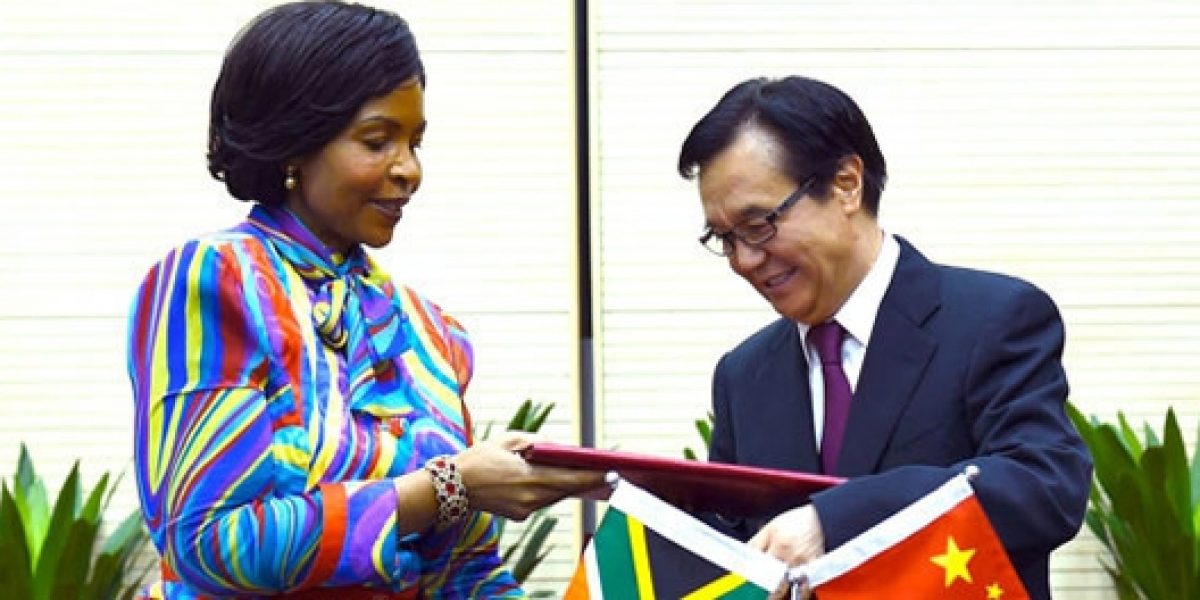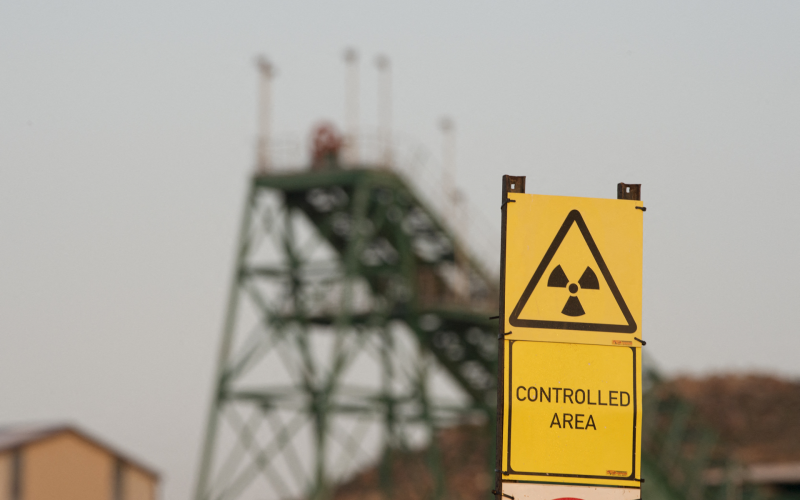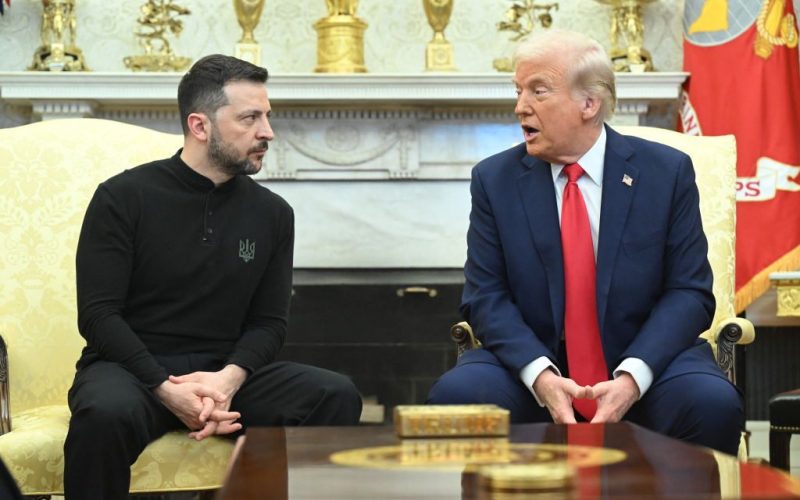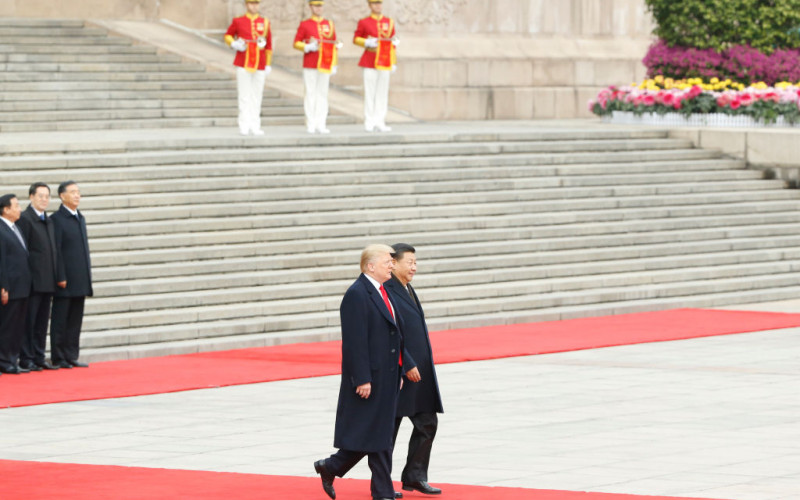Financed in part by the China Africa Development Fund, the deal reportedly involves the Chinese company taking a 51% share in the joint venture and building a processing plant that will go beyond the mere extraction of resources for export and generate local employment.
This initiative is part of a trend that links up with other Chinese investments such as expansion of Hisense and the FAW automotive manufacturing plants, discussions of the revival of the Coega Industrial Development Zone and even a prospective mixed-use residential, retail and light-industry facility east of Johannesburg. The momentum building behind more than a decade and a half of cooperation is producing closer economic ties that mirror the burgeoning bilateral diplomatic relationship.
After a slow start, two way trade has accelerated since 2009, jumping by 32% between 2012 and 2013 – from R205 billion to R270 billion, making China the largest trading partner of South Africa. While total trade is still dominated by resource exports from South Africa and finished products imported from China, there has been much effort by both governments to encourage economic diversification.
As investors, however, Chinese firms have shown great caution in broaching the South African market, focusing initially on investment in the mining and construction sectors; followed by purchase of an equity share in the financial sector; then movement into manufacturing of consumer products and eventually buying stakes in local media.
According to figures by UNCTAD (in millions of USD), the Chinese FDI stock in South Africa in 2012 was $5,077 million, compared to the European Union’s $124,269 million and the US’s $11,711 million. This is partly because Chinese investors find the South African business environment very complex – including the rigid labour market and regulatory regime as well as BEE requirements – and ever fraught with perceptions of personal risks like crime. For their own part, South African firms have made some significant gains in breaking into the Chinese market with the lucrative investment of Naspers into a sensitive media sphere, more specifically the social media business Tencent, being a leading example of what can be done. In turn Naspers is an important conduit for Tencent’s entrance into the South African market as reflected by WeChat (a social media and messaging app) that appeared on the local scene in 2013.
On the diplomatic front, by way of contrast, bilateral ties have moved steadily closer over the years. Underpinning this development is the fact that South Africa and China have come to realise that they share many common perspectives on international affairs. In this regard, South Africa’s two terms on the UN Security Council provided an important opportunity to work with Beijing on a range of African issues and, in the course of interaction, develop trust.
Their joint participation as part of the BASIC group in the international climate change negotiations have helped shaped the developing country perspective, providing another opportunity to collaborate.
Bilateral defence cooperation remains modest while Chinese mediation and peacekeeping in Africa have won praise from top South African generals. The invitation to join BRICS (the Brazil, Russia, India, China, South Africa Forum) cemented South Africa’s global stature and provided a platform for its foreign policy aspirations.
And, despite the maddeningly slow process of forming the BRICS development bank, Beijing’s support for the inclusion of Africa as a possible third party recipient of loans falls squarely in line with South Africa’s continental development agenda.
Indeed, under President Jacob Zuma, the relationship is deepening, with the exchange of senior ANC personnel for management training and efforts to learn from aspects of the Chinese development experience in handling cumbersome para-statals.
And yet, even in the area of international affairs there remain issues of difference, especially on Africa. The recent allegations of a $38 million Chinese arms deal with South Sudan caused some to question the real motives of Beijing’s mediation efforts in that ongoing conflict.
Closer to home, the public outcry generated by President Ian Khama’s disappointment with the quality and pace of Chinese infrastructure projects in Botswana introduced new hesitancy on the part of potential Southern African business partners. Moreover, local businesses and trade unions continue to worry about unfair competition, the asymmetry in the trade relationship and labour practices by some Chinese firms.
This perception gap between a relationship that is expanding its official development and international cooperation into new sectors and South African and Chinese publics that continue to view each other with a measure of suspicion is a matter of mutual concern.
Indeed both governments have launched public campaigns to educate their societies, notably the current ‘South Africa Year in China’ and ‘China’s Year in South Africa’ set to run in 2015. Beyond these formal outreaches, the presence of one of the largest Chinese communities in Africa and an active civil society increase the possibilities of finding a conduit for interaction that will lay the foundation for deeper understanding.
South Africa’s ties with China display the diversity and dynamism that is to be expected from a maturing relationship. A unique trait is the willingness to engage one another and tackle any challenges through consultation.
The upcoming FOCAC 2015, a triennial ministerial meeting between China and Africa that is to be hosted by South Africa next year, promises to provide a platform where this growing bilateral relationship can be mobilised to address continental concerns.








